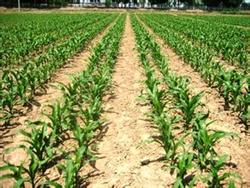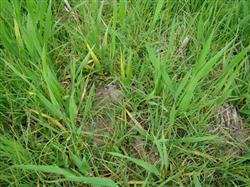Introduction to planting techniques of Sweet Corn

Sweet corn has wide adaptability and high benefit. It has the characteristics of sweet, tender and intolerant storage. It is often restricted by cultivation conditions and market factors. The key to planting sweet corn is to master the techniques of seedling raising and preventing corn from being mixed with flour, and to master its production and cultivation techniques. 1. Variety selection: select varieties with wide market, high yield and high quality and strong resistance. The fresh ears with good management can reach more than 2000 jin per mu. II. Sowing time: spring in the middle and late March, autumn in early July before. Third, seedling: select fertile vegetable garden land as seedbed (if the seedbed is directly opened in the field, it is necessary to mix soil and sprinkle 10 jin 3 compound fertilizer evenly on 20 square seedbeds to improve the fertility of the field seedling bed), and open a drainage ditch, and spread 40 pieces of 100-hole seedling tray per mu on the whole seedbed. Cover seedlings in early spring with agricultural film to keep warm, cover seedlings in summer and autumn with sunshade net to protect from sun and moisture, remove sunshade net after 2 leaves emerge. 4. Transplanting field (1) Land selection conditions: select paddy and dry fields with high soil fertility and convenient irrigation and drainage. (II) Fine soil preparation with high ridge and deep furrow, deep plough of 20 cm, after leveling, ridge shall be started according to the ridge width of 100 cm, ditch width of 30 cm and ditch depth of 20-30 cm, and the soil blocks on the ridge surface shall be arranged into fine particles. No-tillage cultivation can be adopted for the second crop. (3) Apply enough base fertilizer per mu with decomposed farm manure 3000--4000 jin mixed superphosphate 100 jin, potassium chloride 20 jin or imported three 15 compound fertilizer 20 jin as base fertilizer into planting ditch when starting ridge, and cover thin soil. (4) Transplanting 1. Spray 150ml acetochlor herbicide 3 days before transplanting. 2. Transplanting density: large row spacing 80, small row spacing 50, plant spacing 25--30. 3. Transplanting time and planting method: When the seedlings have 4 leaves, they can be planted directionally (the leaves should be vertical to the rows), and the seedlings can be guaranteed by watering them with sufficient water after planting. VI. Field management (1) Fertilization 1. Seedling fertilizer: 5 days after planting, 20 loads of water (dilute biogas water)+5 jin of urea shall be used to promote root growth. 2. Fertilizer allocation: When 8- 9 leaves are planted, urea and potassium fertilizer are applied in combination with intertillage weeding, loosening and cultivating mu, each 25- 30 jin. 3, attack full fertilizer: in the big bell stage (about 12 leaves) mu urea, potassium fertilizer each 20--25 jin, or three 15 compound fertilizer 20--25 jin, weeding loose soil, cultivating soil hole fertilization. 4, filling fertilizer: in the powder stage, according to the seedling situation, 5- 10 jin urea per mu, extend the green leaf function period. 5. Cleverly apply foliar fertilizer: spray 1 Guoguang corn Aifeng foliar fertilizer on 6--9 leaves per mu, spray 1000 times imported boron fertilizer +0.4% potassium dihydrogen phosphate once before flowering. (2) Water management Irrigation during drought to maintain soil water holding capacity up to 70%, irrigation at flowering stage once. VII. Prevention and control of diseases and insect pests (1) Seedling stage: mainly to prevent and control pests such as ground tiger, mole cricket and green insect. (2) Nodal and heading stage: 1000-1500 times of Regent or 800 times of 2‰ emamectin 2-3 times can be used to control corn borer. Jinggangmycin was used to control sheath blight, and chlorothalonil 800 times or 800 times of corn mildew was used to control corn big and small spot diseases. (3) During the flowering period of the ear, there are aphids, so anti-aphidin or imidacloprid pesticides (such as Daxiong, Jindi, etc.) can be selected. Pesticides are prohibited 20 days before harvest.
- Prev

How to "spray three precautions" in the later stage of wheat
Wheat rosette dwarf disease is a viral disease transmitted by the virus vector gray planthopper. There are two peaks in the transmission and infection of gray planthopper on wheat: the first peak is after the emergence of wheat seedlings, and the second peak is after the wheat turns green.
- Next

Common Diseases and Control of Potato
Common Diseases and Control of Potato
Related
- The first cup of black tea in spring, the flavor and history of tea gardens in Kenya, Africa
- The computer can not only choose potatoes, but also grow tea rice. AI will grow winter oolong tea champion.
- It is not only the inflated tea bitten by insects, but also engraved with the four seasons tea in Beipu.
- The Oriental Beauty Tea Festival in Zhuxian County takes the stage at the weekend to experience the plus-size feast of oil tea.
- & quot; Oriental Beauty Tea & Exploration of Emei in Hsinchu, the hometown of quot;
- The new variety of strawberry "Tainong 1" dessert is the first choice with mellow aroma. Crimson gorgeous
- History of Tea in Taiwan: from Wild Inner Mountain to Export Tea Garden
- Two types of Taiwan Oriental Beauty Black Tea won the British three-Star Award for Childhood Tea Xiang Zhang Jiaqi changed from pilot to champion tea maker.
- Banana species and varieties: the planting history of Taiwan Xianren banana and dwarf banana is long, is banana disease resistant?
- Coffee planting Technology: Qianjie Coffee from Seedling to harvesting

